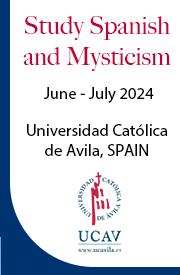Wikipedia is among my frequent stops in daily excursions across (or is it into) the Internet. In its decade-and-a-year of existence, Wikipedia has exceeded my expectations and confuted my initial concerns about its potential truthfulness and integrity.
I’d asked myself: Can an open-source encyclopedia really be accurate? Over the years, I have seen a few examples of wild imprecision (including “political” editorializing that is usually caught quickly and taken down). And it is not uncommon to see warnings in a given article that its accuracy is disputed, that more citations are necessary, or that editing is closed temporarily. Time cools hotheads, apparently.
A hundred-thousand “active contributors” are responsible for Wikipedia’s content, and not all of them have their feet firmly on the ground; a few figure that a lie becomes true if it appears in Wikipedia, even if only briefly. But the collaborative editing seems to catch most errors – no mean feat in its English edition, which now has nearly 4,000,000 entries (and two-billion words).
It’s about fifty times the size of the last print edition (and I do mean last) of Encyclopedia Britannica. So kudos to founders Jimmy Wales and Larry Sanger who, following web developer Ward Cunningham’s coinage, chose the name “wiki” from the Wiki Wiki Shuttle Bus at the Honolulu Airport (wiki = fast). Their creation is now online in 284 different languages and is the sixth largest site on the Web. (It’s instructive to read the Wikipedia entry on Wikipedia, which deals in large measure with concerns about its accuracy.)

But I love to tumble into Wikipedia and to follow its links. To wit:
Thanks to a recent post by Fr. Dwight Longenecker at his blog, Standing on My Head, I learned about the Basilica of the Holy Cross in Jerusalem (Basilica di Santa Croce in Gerusalemme), a church in Rome of which I’d never heard. And quite a place it is, as Fr. Dwight’s post explains:
In a side chapel there are relics of the crucifixion: the complete crossbeam of the good thief, a fragment of the true cross, a nail used to crucify Christ, a thorn from the crown of thorns, the titulus (the name plate which hung over the Lord) and the finger bone of St. Thomas which was put into Our Lord’s wounds.
Such assertions, making Holy Cross seem a bit like a big-box retailer of the Passion, may make some Catholics wince. Not I. More and more this is one aspect of our faith that makes me love Catholicism – and exceedingly so. There is an ancient concreteness that makes Catholicism unlike other faiths and roots us Catholics to the ministry of Jesus. Two-thousand years? That’s nothing to us. That was yesterday. And we have the artifacts to prove it.
On to Wikipedia:
Holy Cross is one of the seven “pilgrim” churches in Rome, along with St. Peter’s, St. John Lateran, St. Paul Outside the Walls, St. Mary Major, St. Lawrence Outside the Walls, and the Sanctuary of Our Lady of Divine Love. (Obviously I’ve used the English versions of the names.) Pretty soon, my own lady of love and I will be visiting Italy, and these will all be stops on our journey. For now, though, I carry my walking staff in cyberspace.

Nobody will be shocked to learn that the provenance of the relics at Holy Cross are disputed, most especially the Titulus Crucis (literally: inscription of the cross). In the Wikipedia article on it, there is this caution: “It is generally either ignored by scholars or considered to be a medieval forgery.”
Ah, but not so fast. Not so darned wiki quick! At the end of the entry is a link to the website of Rosary Workshop, where the discussion of the relics is singularly lacking in skepticism. Sure, some may argue the Rosary Workshop business model pretty much depends upon credulity. But one may also dispute Wikipedia’s either-or statement: What sort of scholar ignores evidence about the Titulus or any other relic? Is this why “ignore” is the root of “ignorance”?
It’s impossible to read about the Basilica of the Holy Cross in Jerusalem, without following links to info about its foundress, St. Helena, who (if you recall Citizen Kane) was a veritable Charles Foster Kane (i.e. William Randolph Hearst) – she boxed up half the Holy Land and sent it home to Rome. You can do this when you’re the wife of one emperor and the mother of another.
Of course, it’s worth wondering if all the “known” fragments of the True Cross were gathered together, would they be sufficient – placed piece-by-piece as in a puzzle – to reconstruct the original. Perhaps the pieces would render but a fraction of the Cross. Or maybe, in toto, there’d be enough wood to build a cathedral of pine.
These are not a skeptic’s considerations. Whether were talking about the relics of the Passion, including the Shroud of Turin, or pilgrimages along the Camino de Santiago or to Lourdes, these holy objects and practices and places are not themselves reasons for faith but expressions of faithfulness: of love and suffering and sacrifice; ours for Christ and his for us.
And this is true whether you are experiencing them firsthand or in a pilgrimage along the labyrinthine ways of the Internet.















